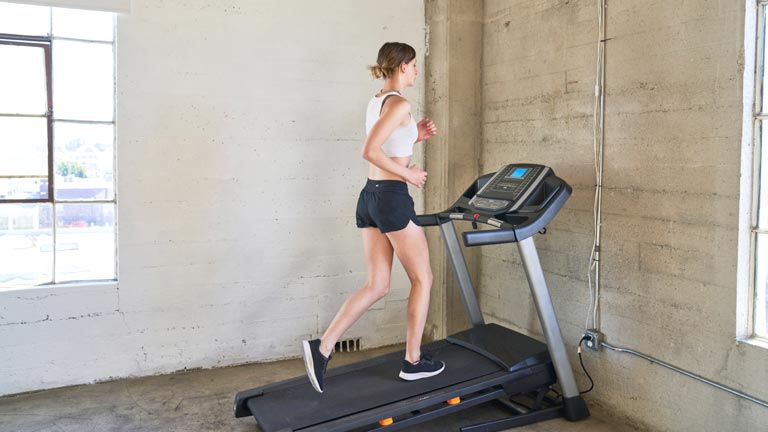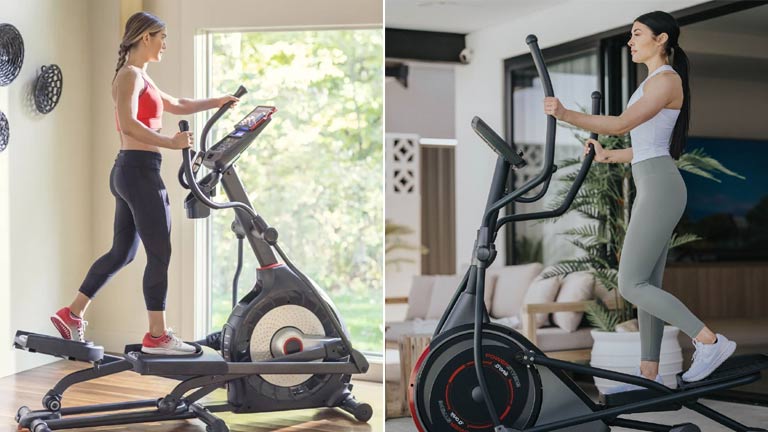Many people have asked this question on the internet. Even I have looked deep into the internet and other sources but didn’t find anything quite helpful. Therefore, once and for all, I’m going to spot and explain the key differences, as well as similarities between an air rowing machine and a water rowing machine.
I’ll be categorizing the differences into sections based on different functionalities and working principles of the two kinds. If you’re having any problem in deciding which one to buy, then continue reading this article. Hopefully, you’ll get your confusion sorted out.
Air Rowing Machine
Remember the fluid, I mentioned earlier. As you may have guessed, the air is used as the fluid to create the resistance. Inside the drum, a fan is spun in the air using the cable that ultimately results in the drag, the user experiences. The faster the blades spin, the more drag the operator has to counter, just like rowing in real life.
Noise levels are significantly higher in air rowing machines. Due to the lower drag in air, the blades must be spun at extreme speeds, and this creates the flattery noise like a typical high-speed stand fan. And it also creates weird vibrations in the entire system that can affect your workouts. To counter these issues, wood is used in the materials instead of metals. This absorbs the vibrations and noise levels at a great experience, providing a smoother experience.
In terms of storage and portability, air rowing machines are quite impressive due to their lightweight design and simple operations. Most of them can be folded and stored at a corner of the house without having to worry about deploying that when needed.
The health and workout monitoring features will become significant with the overall price you’ll pay for your machine. Still, monitoring functionalities are excellent in air rowing machines as there are more scopes for attaching workout monitoring systems like distance, split times, watts, dragging pace, and force curves.
Pricing is desirable for air rowing machines because it doesn’t include complex working mechanisms for the operation. You can get the best deals with top-notch monitoring systems for just ₹20,000 or $300. There are more affordable deals out there, but it will eventually subtract essential features like the monitoring systems.
Water Rowing Machine
Just replace the air with water inside the drum, and you’ll get a water rowing machine. Compared to air-filled ones, water rowing machines provide a very similar experience compared to rowing in real life. Ultimately you’ll be dragging the oars against the water. Therefore only water can provide the closest experience of rowing in real.
Adjusting the resistance level is way more simplified and variable. You can effortlessly add or subtract water in the drum to increase or decrease the resistance, respectively. Additionally, this creates more space for a better resistance range for the user, comforting every person, whether amateur or professional.
The noise level, as you may have guessed, is significantly low. It doesn’t create the flattery noise the air-filled rowers make. The movement of the blades in the high-viscosity fluid creates a smooth drag and soft sound. This also reduces the vibrations that come out, and thus, there’s no necessity for using wood in the build.
One thing that you all have to compromise is the probability. The water adds bulk to the entire system. Though you can drain the water when not in use, even adding and draining the water from time to time creates a big hassle for using a water-filled rowing machine. As an advantage, the weight of the water helps in better stability.
There isn’t much scope for implementing sensors that can monitor the calories you have burnt. This is due to the work principles of water-filled rowing machines. But still, you’ll be getting other sensors like heart rate monitor, distance, split times, watts, dragging pace, and force curves.
Pricing is also higher compared to air rowing machines because it involves lots of sophisticated hardware like gaskets, water level indicators, inlets, drainage valves, etc. Some of the best models are available for ₹30,000 or $350, and in this case, too, you can subtract the price by eliminating additional features.
Final thoughts
Both types have their respective advantages and disadvantages. Thus you’ll have to make sure which features you want and which you can sacrifice.
Air rowing machines have excellent portability, a better workout monitoring system, and an affordable price, whereas compromises in resistance range and noise level. In the same way, water-filled rowing machines have smooth resistance, variable resistance range, and tolerable noise levels, but lack portability, affordable pricing, and workout monitoring.
Ultimately, the decision still depends on you. I’ve just made you aware of the crucial differences in their work principles and other functionalities. If you want to read more about the difference between the two, then you can read this Concept2 vs WaterRower comparison where the author has done amazing work by comparing two products, one uses Air to create resistance and the other uses water to create resistance.
Like I said earlier, hopefully, you’ll get your confusion sorted out. If so, then we consider writing this article as a success. We shall bring more helpful content soon, but before that, be careful in choosing the rowing machine type you want.




